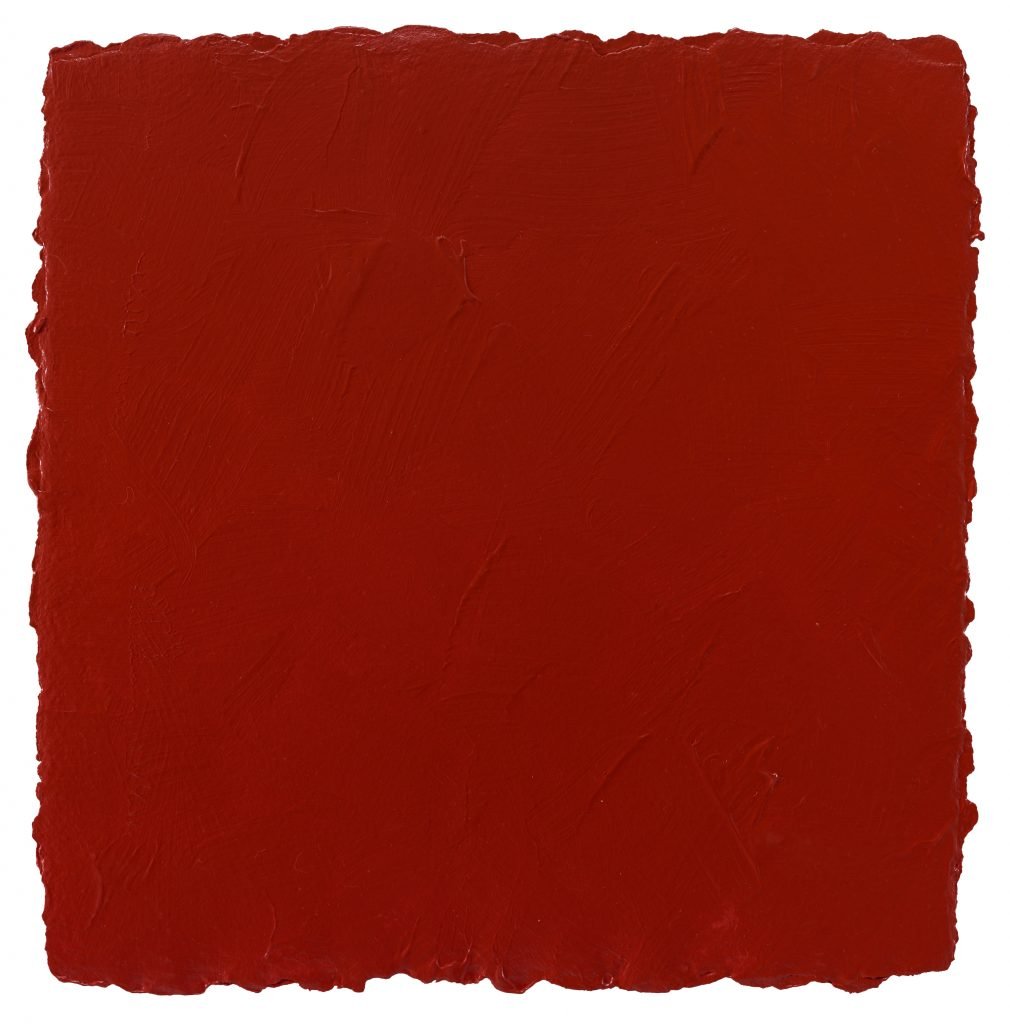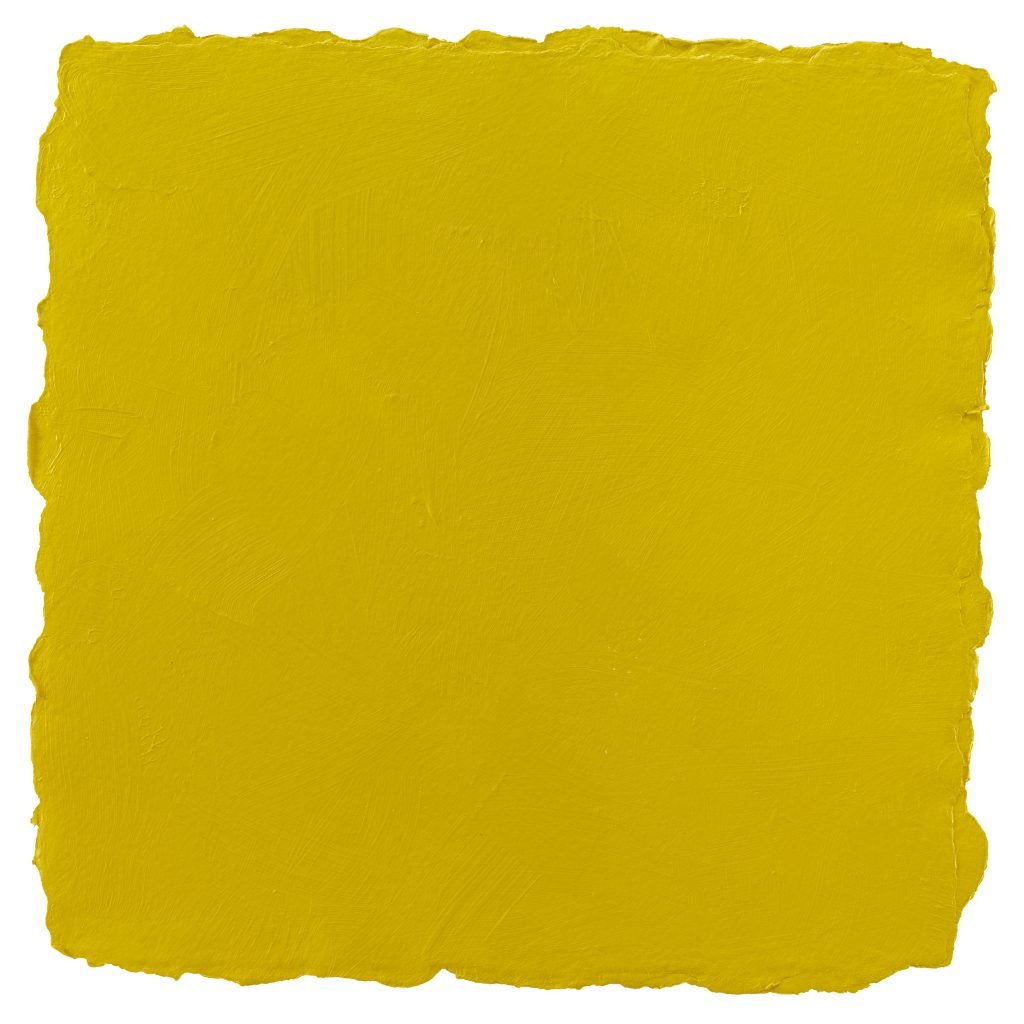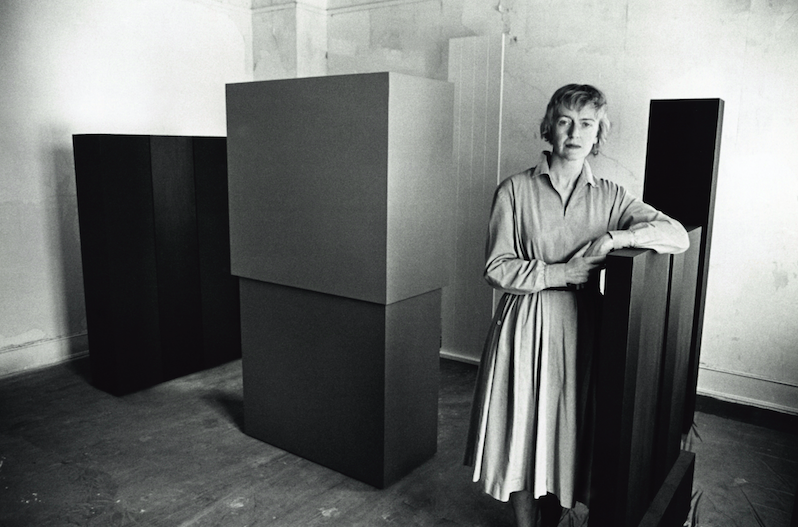“Something strange is happening to me.”
So explained Anne Truitt in a letter to her daughter in the fall of 2003, one year before her death at age 83. “Certain ways in which I have made my work ever since 1961 have simply—very simply, silently and without saying goodbye—departed from me.”
Truitt was talking about making “Sound,” a new body of work that would go down as one of the last in her decades-long career.
Each of the 14 entries in the series comes in the form of a square piece of paper covered edge to edge in thick, monochromatic swaths of paint—a pensive study in color, abstraction, and, yes, sound. They went on public view for the first time last week at Matthew Marks Gallery in New York (through December 19).

Anne Truitt, Sound Eleven (2003). © Estate of Anne Truitt, Courtesy Matthew Marks Gallery
“It’s as if a person had decisively walked quietly out of a room I am used to living in and in which I were thoroughly accustomed to a powerful presence,” the artist continued in the letter. “I am surprised. What is left is ‘sound,’ some kind of energy without name. More force, no name.”
“Yesterday while walking around,” Truitt went on, “it occurred to me that the ‘name’ of the things I am making out of the beautiful delicate strong paper…is SOUND.”
For those familiar with the artist’s greatest hits—her totemic sculptures or expansive Color Field paintings—the “Sound” series might come as a surprise. The profound interest in color that imbues much of Truitt’s work is there, but the finish is different. Whereas older efforts evinced clean—if imperfect—surfaces, these works on paper are expressive and aggressive and rough.
And yet, as Matthew Marks director Cory Nomura explains, what distinguishes the “Sound” series within the artist’s catalogue is also what makes it unmistakably Truitt.
“She continued to innovate within a particular language throughout her entire practice,” Nomura tells Artnet News. “It never became a rote operation. Everything was made deliberately and with intense meaning and thought behind it.”

Anne Truitt, Sound Seven (2003). © Estate of Anne Truitt, Courtesy Matthew Marks Gallery
“Anne Truitt: Sound” is the seventh solo presentation of the artist’s work at Marks. (The show is also featured on the dealer’s virtual exhibition platform.)
Since the gallery began working with Truitt’s estate 12 years ago, Nomura notes, it has been making its way through the bodies of work she left behind. During that time, the market for her art has also grown significantly. Truitt’s 15 priciest auction sales—which comprise sculptures, paintings, and works on paper—have all come since 2012, according to the Artnet Price Database. The top five, including a 1983 sculpture that sold for a record $325,000 at Sotheby’s, have taken place since 2018.
The artist has also received growing institutional attention as art historians seek to expand the story of Minimalism. In 2017, Dia:Beacon unveiled a long-term exhibition of Truitt’s work dating from the 1960s to the 1980s.
“Anne Truitt: Sound” will be on view at Matthew Marks Gallery November 12–December 19, 2020.








